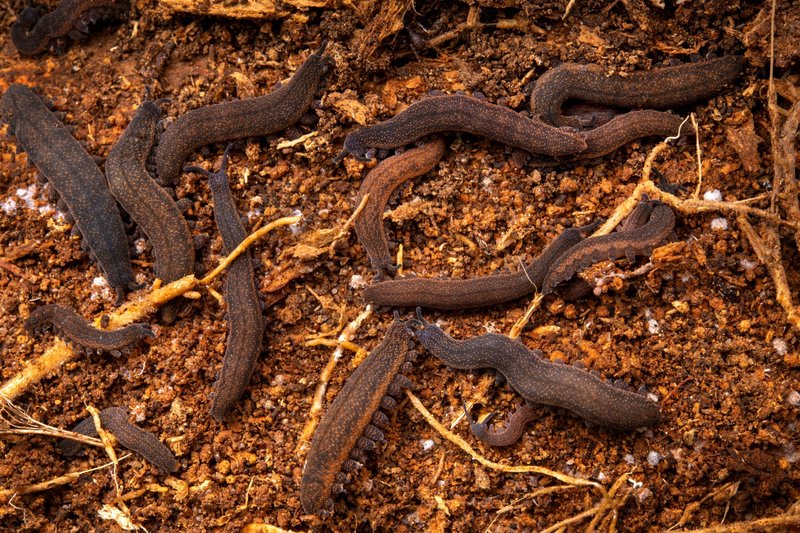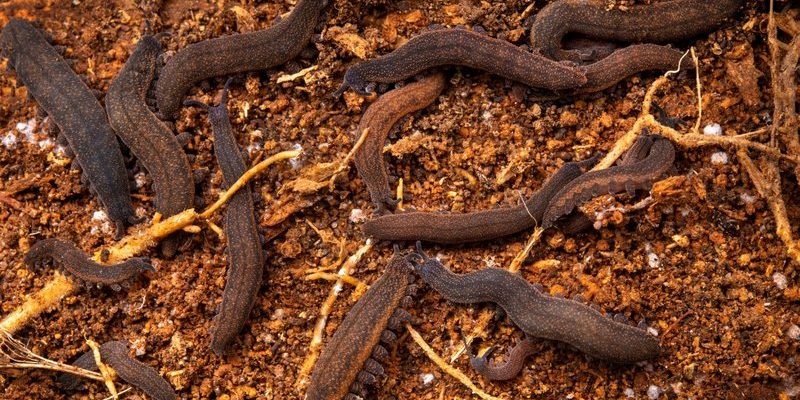
Imagine living in an ultra-soft, cozy blanket—that’s what it feels like for velvet worms in their favorite environments. They love moisture! Think of them as nature’s equivalent of a barista at a coffee shop, enjoying the perfect balance of warmth and humidity. But what does this mean for their survival? Understanding their preferences is key to recognizing how these unique creatures navigate their little corners of the Earth.
What Are Velvet Worms?
Velvet worms, known scientifically as **Onychophora**, are fascinating little critters that bridge the gap between insects and snails. They have soft, velvety bodies and many pairs of tiny legs that help them glide through leaf litter and damp soil. But what makes them even cooler is their hunting technique. They can shoot a sticky slime from their mouths to trap unsuspecting prey, like insects. How wild is that?
These creatures are not just a curiosity; they actually play a vital role in their ecosystems. By controlling insect populations and recycling nutrients, they ensure that the forest floor remains healthy. And guess what? There are about 200 known species of velvet worms, all of which have evolved to live in unique, moist environments.
The Love for Moisture
Honestly, if you want to understand velvet worms, you must grasp their love for **moisture**. These worms thrive in humid environments because their bodies are covered in a thin layer of cuticle that can lose water quickly. This means they need to hang out in places with high humidity to keep themselves hydrated.
The moisture found in leaf litter, under logs, and within soil helps them maintain their slimy texture, which is crucial for their survival. Without enough moisture, velvet worms can become desiccated, leading to a slow and unfortunate death. So, when you think about where to find them, look in those cozy, damp spots that retain water.
Microhabitats: The Worms’ Safe Havens
Now that we know they love moisture, let’s dive into the types of **microhabitats** that velvet worms prefer. These tiny ecosystems are all about creating the perfect conditions for life. Here are some common microhabitats where you might stumble upon these fascinating creatures:
- Leaf Litter: This is like a plush carpet made of decaying leaves, providing shelter and food.
- Under Logs: These damp retreats offer safety from predators and maintain moisture levels.
- Soil: Dark, moist soil can be a hidden haven for velvet worms, allowing them to burrow and hide.
Each of these habitats offers a unique blend of humidity, shade, and food sources, making them ideal spots for velvet worms to thrive. They love to be where it’s cool and damp, avoiding direct sunlight as much as possible.
Temperature Preferences
Temperature is another crucial factor for velvet worms. They prefer a range of **temperature** that keeps them comfortable—typically between 15°C to 25°C (59°F to 77°F). Too cold, and they might slow down, making it harder to hunt and reproduce. Too hot, and they run the risk of drying out.
You know how you feel when you step into an air-conditioned room on a hot day? That’s how velvet worms feel in their perfect temperature zone. By staying within their preferred range, they can maintain their energy levels and keep their bodies functioning properly. So, if you’re ever on a hunt for these creatures, focus on shaded, cool areas.
Hunting Strategies in Moist Environments
In the wild, velvet worms rely heavily on their surroundings for survival, and their **hunting strategies** are closely tied to the moisture in their microhabitats. Using their slime-shooting technique, they can ensnare prey with remarkable precision.
When humidity levels are high, their slime becomes stickier, allowing them to capture insects more effectively. Think about it—if you’re trying to catch something slippery, it’s much easier to have the right tools for the job. It’s like trying to grab a wet bar of soap; it’s all about the conditions!
Additionally, they often use their environment to their advantage. This means they can hide under leaves or logs and wait for the right moment to strike. By being patient and staying concealed, they increase their chances of a successful hunt.
The Role of Velvet Worms in Their Ecosystem
You might be wondering why velvet worms matter in the grand scheme of things. Their role in the ecosystem is vital, and it goes beyond just being an interesting creature to observe. These little guys help maintain a balance within their habitats in several ways:
- Prey Control: By eating insects, they help regulate populations, ensuring no single species overwhelms the environment.
- Nutrient Cycling: As they feed on decaying plant matter and small organisms, they contribute to nutrient recycling in the soil.
- Biodiversity Indicators: Their presence often indicates a healthy, functioning ecosystem, acting as a sign of environmental well-being.
So, while they might seem small and insignificant, velvet worms play a big role. They help keep their habitats balanced, allowing various species, including plants and other animals, to thrive.
Conservation Status and Threats
Let’s talk about the **conservation** status of velvet worms. Despite their resilience, many species are threatened by habitat loss and climate change. As moisture levels fluctuate due to environmental changes, their delicate ecosystems are at risk.
Deforestation, urbanization, and pollution are all factors that disrupt their natural habitats. When these changes occur, it can lead to a decrease in the moisture they require for survival. Here’s the thing: losing these creatures would mean losing an important piece of the ecological puzzle.
As nature enthusiasts, it’s essential to advocate for the preservation of these unique microhabitats. Supporting conservation efforts and raising awareness can help protect velvet worms and the ecosystems they inhabit.
Understanding the Future of Velvet Worms
Looking ahead, the fate of velvet worms hinges on our understanding of their preferences and habitats. Protecting their moist microhabitats is critical. Climate change poses a significant challenge, but by increasing awareness and taking action, we can help these unique creatures thrive for generations to come.
As we learn more about velvet worms, we can better appreciate their role in nature. They’re not just weird little guys; they’re vital players in the ecosystems they inhabit, and their presence speaks volumes about the health of our planet.
In conclusion, velvet worms are intriguing and essential members of the natural world. Their love for moisture and specific microhabitats showcases their unique adaptations. By paying attention to their needs and advocating for their preservation, we can ensure that these fascinating creatures continue to thrive in their moist microhabitats. So next time you’re out exploring, keep an eye out; you might just stumble upon a velvet worm in its cozy, damp home!

